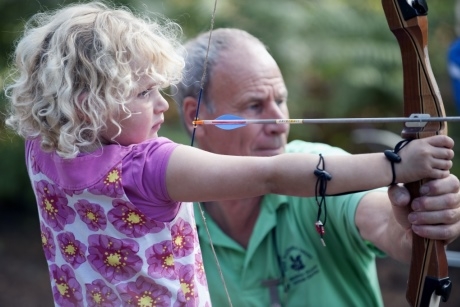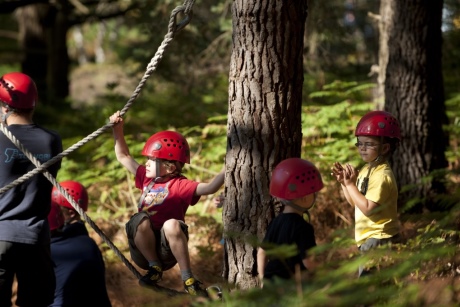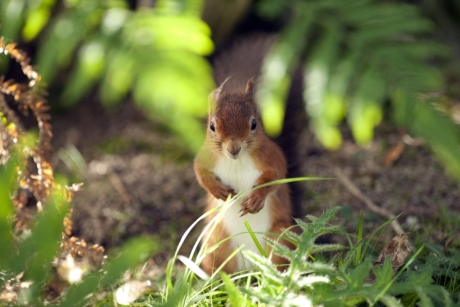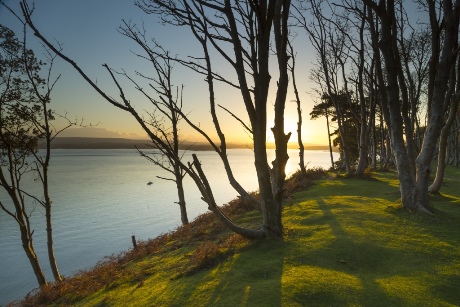National Trust-owned Brownsea Island has an extensive range of activities, both fun and educational, for students of all ages. School Travel Organiser investigates.

Brownsea Island, located in Poole Harbour off the coast off Dorset, has had a turbulent history. The island, which measures a mere 1.5 by 0.75 miles, has played the role of military stronghold and refuge for wildlife, and was one of the first locations for the founding of the Scouts.
It has also been pillaged by Viking raiders, blitzed by Nazi bombers, and is home to the rare red squirrel – so it’s no wonder there’s so many educational activities for school groups to do here.
The island can be reached by a public ferry or by private boat – ferries leave every 30 minutes from Pool Harbour and Sandbanks. There is a wharf and a small dock near the main castle on the island, and plenty of wild areas to explore including salt marsh and forest.
School groups visiting Brownsea Island can pick and choose from a collection of activities linking to subjects such as Science, Art and History. There are also a number of physical outdoor exercises to pick from, like orienteering, survival challenges, or squirrel safaris.
Each learning session runs for either an hour or one and a half hours; wearing wellies and waterproofs is encouraged. The activities range in age suitability from Early Years to Key Stage 4, although each activity can be tailored for all abilities.
Getting to know the island
Pupils can get their bearings on Brownsea Island by taking an orienteering session that lasts an hour and half; the class will learn how to use a compass and follow bearings on an orienteering course.

Pictured: Exploring Brownsea Island. (Photo credit: National Trust Images, John Millar).
Teachers who’d like to extend this task can do so by purchasing an orienteering map from the island visitor centre and encouraging their class to take a full orienteering course around Brownsea’s perimeter.
Another way to explore is to take an hour-long Wonderful Woodlands guided walk. The children can use their senses to explore the woodland on the island and be inspired by the sights, sounds, smells and textures around them.
Scientific discoveries
Being a nature reserve, the island has plenty to tie in with the nature studies of Science. A one hour Habitats session will focus on Brownsea Island’s number of diverse animal habitats. The pupils will be introduced to woodland, heathland, and wetland habitats and learn about their inhabitants.
A visit can also provide insight into the coast. The island’s coastline is constantly changing and eroding, providing a real-life case study for a coastal investigation. Through practical demonstrations and activities, children will gain a deeper understanding of the processes affecting Britain’s coasts and the issues related to this subject.
Teachers can also opt for their group to take a squirrel safari. The island is famous for being home to red squirrels, and during this session, pupils will find out what they eat, where they live and why they are so rare. Included are activities to help the class understand what life as a squirrel might be like, as well as the chance to hopefully spot one of the creatures in the trees.

Pictured: A red squirrel on Brownsea Island. (Photo credit: National Trust Images, John Millar).
Historic connections
Classes can get to know the island’s history by taking a workshop called An Island Home; this is a one-hour session aimed at Key Stage One children and presents what it’s really like to live on an island. This walk and talk will let children in on some of the secrets of island life and show how different it is from living on the mainland.
Meanwhile, older children can take a Brownsea Outdoor Adventure lasting an hour and a half. The group will find out about the founder of the Scout movement, Lord Baden-Powell, and his Scout camp from 1907 which was located on Brownsea Island. In patrols, the children can take on challenges and activities that would have been undertaken at that first camp.
There is also an Outdoor Detective session relating to Baden-Powell, who saw observation and tracking as two of the most important skills as a Scout. Over an hour and a half, the class will try some of his own ideas and games and learn how to lay and follow a trail using his signs.

Pictured: The south shore of Brownsea Island. (Photo credit: National Trust Images, John Millar).
Get arty
There are two Art-related sessions at Brownsea Island, too. In Victorian times Brownsea had a thriving pottery industry, and to recreate this, the class can take a one hour Go Potty session. They’ll find out how clay was used and then have a go at making their own piece of pottery from quick drying clay.
Alternatively, there’s Natural Art, a one hour session that will see students using the island’s natural resources to create a unique piece of art. Artwork can be flat or a sculpture, a picture or abstract, and rocks, shells, sticks, feathers, leaves and seeds can be used as Art materials.
School booking information
Teachers interested in booking a trip to Brownsea Island can call 01202-492161or e-mail brownseagroupbooking@nationaltrust.org.uk.
Ferry travel should be booked with either Brownsea Island Ferries or Greenslades Pleasure Boats.
For further information visit www.nationaltrust.org.uk/brownsea-island.
(Lead image photo credit: National Trust Images, John Millar).










